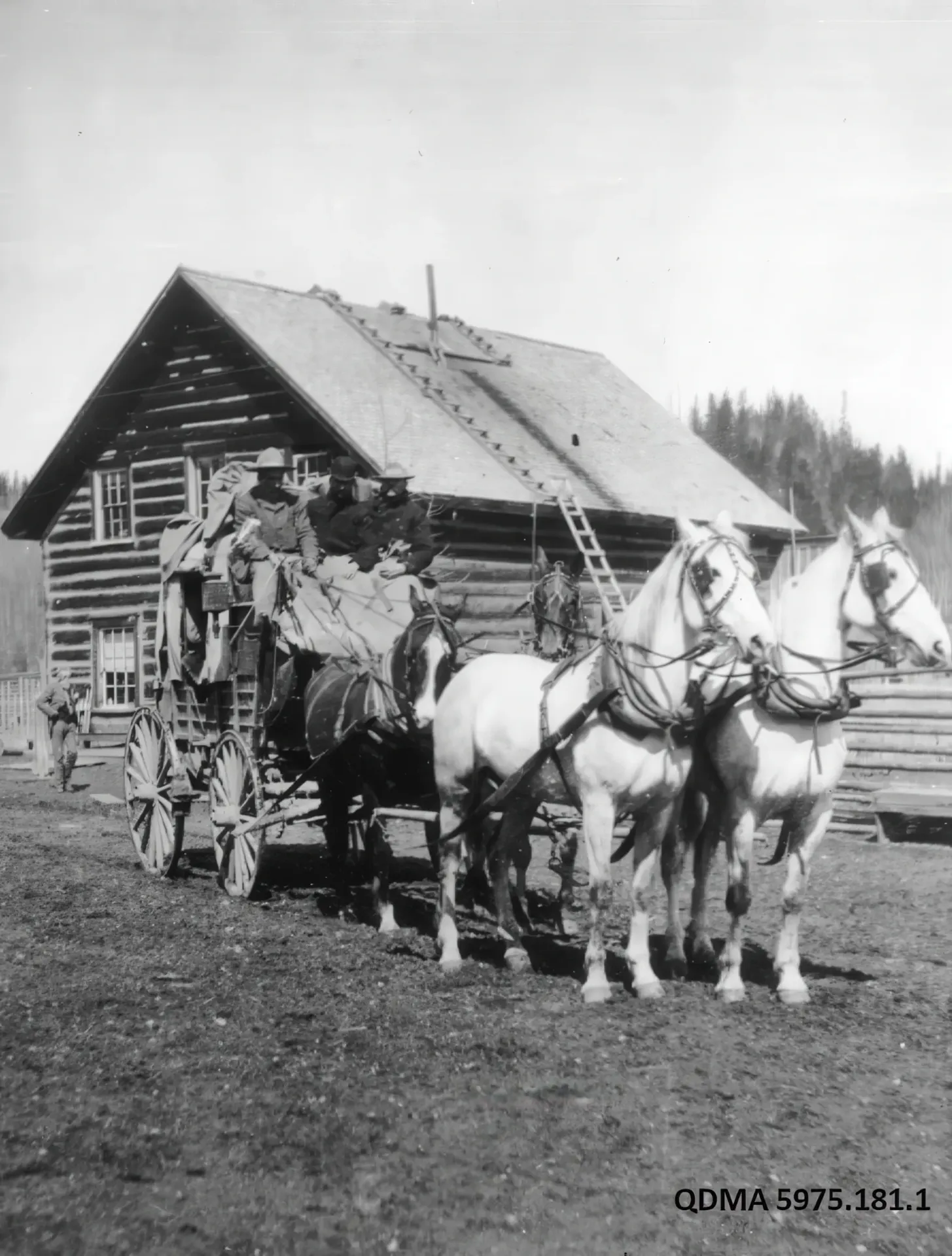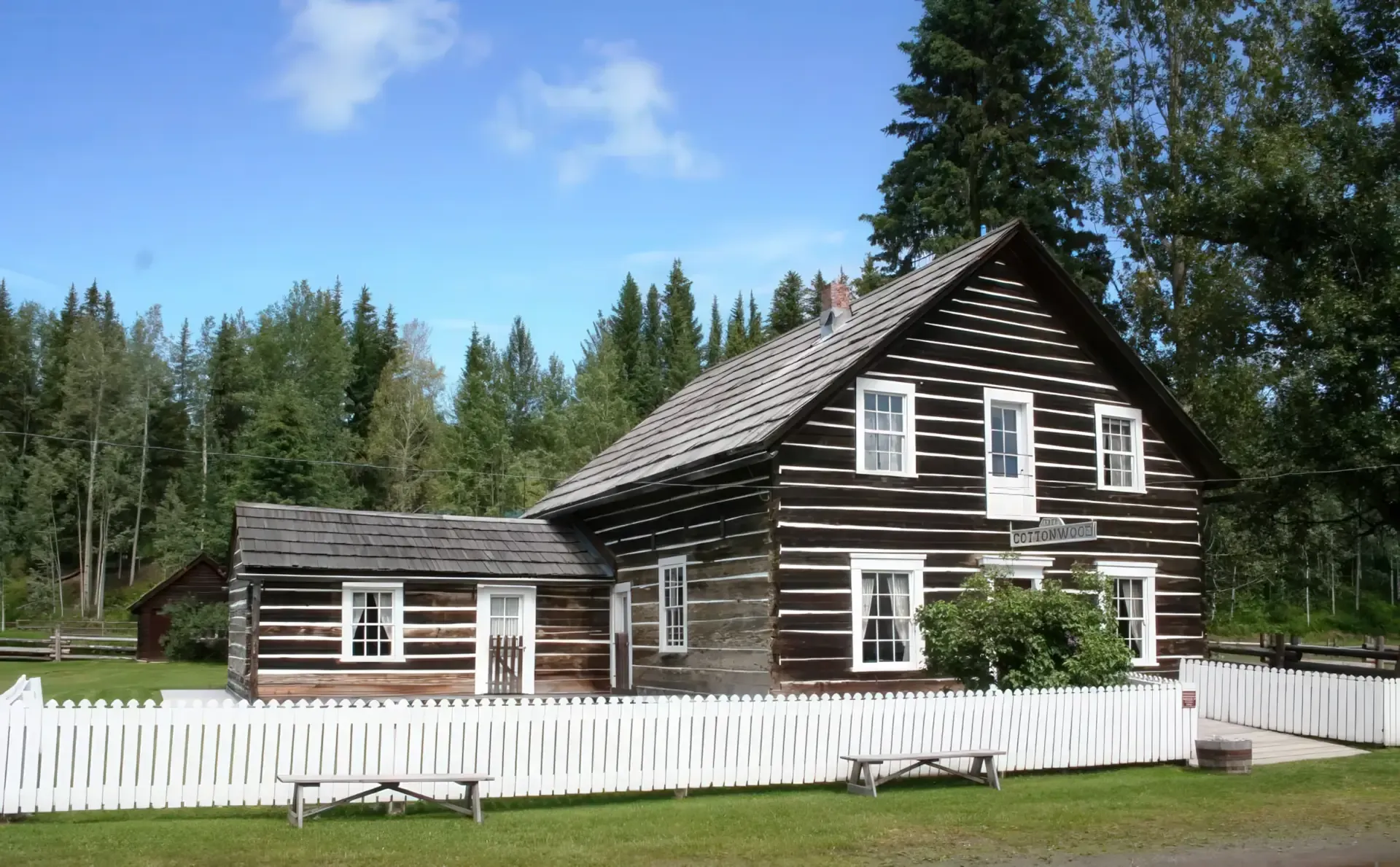Cottonwood House Historic Site
Written By Loretta Fogarty
INTRODUCTION
With the California gold rush fading in 1857, a steady influx of miners arrived at Fort Victoria as the news of gold discoveries in the British Territory of New Caledonia (now British Columbia) leaked out. By 1858, the Fraser River Gold Rush had begun and news spread to San Francisco and the world.
Through the urging of James Douglas, the appointed Governor, the British colonial office established the mainland as a crown colony and by August 2, 1858, it became the Colony of British Columbia. With the news of gold discoveries in the Cariboo spreading around the world, the influx of pack trains with supplies and people was the impetus to build a wagon road 400 miles (640 kilometres) in length, which was started in May of 1862, by the Royal Engineers. The Cariboo Wagon Road was completed in 1865 when it arrived at its final destination in Barkerville.
Along the Cariboo Wagon Road were many roadhouses providing shelter, and food to the travellers. All but a few of the roadhouses fell into the dust of the Cariboo Road over time, but one of those able to survive, even after the height of the gold rush, was Cottonwood House, built in 1864. This is a story of Cottonwood House, celebrating its 160-year anniversary in 2024.
Additional information on Cottonwood House is available at the Barkerville Historic Town website and in the book ‘Cottonwood House Historic Site – 1864 to Present’ available at the online Barkerville Gift Store.
Sources
- Loretta Fogarty. “Cottonwood House Historic Site – 1864 to Present”
Barkerville Historic Town & Park and Cottonwood House Historic Site (both governed by The Barkerville Heritage Trust), 2020, page 19. - Loretta Fogarty. “Cottonwood House Historic Site – 1864 to Present”
Barkerville Historic Town & Park and Cottonwood House Historic Site (both governed by The Barkerville Heritage Trust), 2020, page 34. - Loretta Fogarty. “Cottonwood House Historic Site – 1864 to Present”
Barkerville Historic Town & Park and Cottonwood House Historic Site (both governed by The Barkerville Heritage Trust), 2020, page 42.
- Loretta Fogarty. “Cottonwood House Historic Site – 1864 to Present”
Barkerville Historic Town & Park and Cottonwood House Historic Site (both governed by The Barkerville Heritage Trust), 2020, page 43. - Emelene Thomas. “Cottonwood Picture.” Cariboo and Northern BC Digest. Part 1: Winter 1947: 90-99. Part 2: Spring 1948: 22-25 & 88-93










